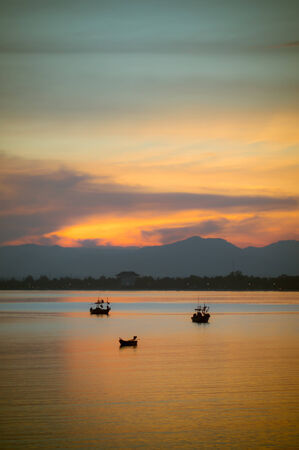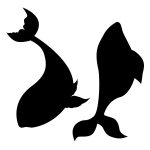1. Why Weather Matters More Than You Think
If you’re just getting your feet wet in the world of fishing, it’s easy to overlook the weather—until it ruins your day or, worse, puts you in danger. Misreading the weather is one of the most common rookie mistakes out there, and it can make or break your first few trips on the water.
How Weather Impacts Your Fishing Game
Weather isn’t just small talk for anglers; it’s a game-changer. From sunny afternoons to sudden storms, the conditions up above have a huge impact on what’s happening below the surface. Fish don’t bite the same way when a cold front rolls in, and safety can become an issue fast if you’re not paying attention.
The Big Three: Success, Safety, and Fish Behavior
| Weather Factor | Fishing Success | Safety Risks | Fish Behavior |
|---|---|---|---|
| Storms & Lightning | Kills bite almost instantly | High risk of lightning strikes, rough water | Fish go deep or hide |
| Sunny & Calm | Can be good for sight fishing but sometimes slow bite midday | Risk of sunburn, dehydration | Fish may go deeper to stay cool |
| Windy Days | Makes casting tough but can trigger feeding near shorelines | Difficult boat control, higher chance of capsizing small boats | Baitfish move, predators follow wind-driven currents |
| Cold Fronts | Bite slows down drastically | Hypothermia risk if unprepared | Fish get lethargic, less active |
| Overcast/Cloudy | Can create perfect conditions for many species | Lower visibility on water; navigation risks increase | Fish feed longer into the day, roam more freely |
Why New Anglers Need to Pay Attention
If you’re new to fishing, not knowing how to read the sky or check a weather app can mean missed opportunities—or worse. The fish change their habits with each shift in weather. A day that looked promising could turn into a bust if you didn’t see that cold front coming. Plus, ignoring weather warnings puts you at real risk, especially on open water where things can go sideways in a hurry.
Common Rookie Mistakes with Weather
- Assuming sunny days are always best for fishing (not true!)
- Heading out without checking for storm warnings or wind advisories
- Dressing wrong for changing temps—getting too hot or dangerously cold fast
- Packing gear that doesn’t handle rain or rougher conditions (cheap rain ponchos won’t cut it)
- Ignoring how pressure changes affect fish activity—big mistake!
If you want to catch more fish—and stay safe—weather needs to be part of your pre-trip checklist every single time.
2. Common Weather Misreads by Rookie Anglers
Overtrusting the Weather App
One of the biggest mistakes new anglers make is putting too much faith in weather apps. Sure, checking your phone before heading to Lake Erie or a Texas bay sounds smart, but weather on the water can flip fast. Apps can’t always predict those pop-up thunderstorms or sudden wind shifts that happen out on the open water. For example, a rookie fishing the Chesapeake Bay might see “partly cloudy, 75°F” on their app and think it’s smooth sailing—but miss the fact that a cold front is rolling in by afternoon.
Ignoring Local Weather Patterns
Every U.S. region has its quirks. In Florida, sea breezes can whip up rough chop by midday even when the morning is calm. Out West, mountain lakes get sudden gusts that aren’t in any forecast. Beginners often overlook these local patterns and find themselves battling waves they never expected.
Common Rookie Weather Misreads Table
| Mistake | Example Scenario | Why It’s a Problem |
|---|---|---|
| Trusting morning forecast all day | Early calm on Lake Michigan, but afternoon winds build quickly | Can get stranded or face unsafe boating conditions |
| Ignoring cloud changes | Fishing Gulf Coast under clear skies—dark clouds appear rapidly | Misses warning signs of thunderstorms or squalls |
| Not reading wind direction shifts | Casting for stripers in New Jersey; wind swings south to east mid-trip | Bait movement changes, fish relocate, boat control gets tricky fast |
| Mistaking fog for “just cloudy” conditions | Morning fog near San Francisco Bay mistaken for harmless cloud cover | Lose visibility, navigation hazards increase, bite may turn off quickly |
Trouble Spotting On-the-Water Cues
It’s not just about forecasts—reading the sky and water matters too. Many first-timers miss subtle cues: a sudden drop in temperature means a front is coming; birds heading for shore could signal rough weather; choppy water out of nowhere often means wind change. In places like the Florida Keys or Puget Sound, missing these signs can ruin your trip—or worse.
Pro Tip:
If you notice baitfish jumping wildly or seabirds suddenly flying inland on Long Island Sound, take it seriously—it could mean a storm is brewing even if your app says “clear.” Always trust what you see over what you read online.

3. From Bluebird Skies to Sudden Storms: U.S. Weather Patterns and Their Traps
Every angler dreams of those picture-perfect bluebird skies, but in the United States, weather can flip the script in a heartbeat. American weather is notoriously unpredictable, and if you’re new to fishing, misreading the sky can turn a day on the water into a disaster. Here’s a real-world breakdown of what you might face and how these surprises can mess with your fishing plans.
Cold Fronts: The Bite Killer
Ask any seasoned U.S. angler about cold fronts, and you’ll get an earful. When a cold front rolls through, temperatures drop quickly and pressure rises—fish get lockjaw, hunkering down and ignoring even the juiciest lures. You might launch under sunny skies, only to have the wind pick up and fish disappear within hours.
How Cold Fronts Hit Your Fishing
| Weather Change | What Happens | Fishing Impact |
|---|---|---|
| Sudden Temp Drop | Wind shifts north, cooler air moves in fast | Bass, walleye, and panfish often stop feeding aggressively |
| Clear Skies After Storm | Bright sun but chilly air | Fish move deeper or hug cover, bites slow way down |
Pop-Up Thundershowers: Sneaky and Dangerous
In many parts of America, especially the Midwest and South, pop-up thunderstorms are famous for catching anglers off guard. What starts as a calm afternoon can turn ugly fast—dark clouds build out of nowhere, lightning cracks, and heavy rain pounds down.
Why It Matters:
- Safety First: Lightning is no joke on open water. If you see thunderheads building or hear distant rumbles, it’s time to head in.
- Bite Window: Sometimes fish feed like crazy just before a storm hits—but don’t push your luck chasing that bite too long.
Fog: Hidden Hazards at Dawn
Mornings on lakes or rivers can bring thick fog, especially when warm days follow cool nights. It looks peaceful but can be risky—boats collide, navigation gets tricky, and landmarks disappear.
- Pro Tip: Take it slow until visibility improves. Use your GPS or fishfinder if you’ve got one; don’t trust your eyes alone.
Wind: Friend or Foe?
A little breeze stirs things up in your favor by pushing baitfish into predictable areas. But strong winds—especially crosswinds—can make casting impossible and even swamp small boats.
| Wind Speed (mph) | What You Face | Tactics Needed |
|---|---|---|
| 0-5 mph (Light) | Slick calm water; fish may be spooky | Casts need stealth; use finesse baits |
| 6-15 mph (Moderate) | Bait pushed to shorelines; choppy surface | Target windblown banks; try reaction lures |
| >15 mph (Strong) | Tough boat control; big waves form fast | Hug protected coves; safety comes first! |
The Bottom Line on U.S. Weather Surprises for Anglers
If you’re new to fishing American waters, keep one eye on the sky—and know that conditions can change faster than you think. Misreading the weather isn’t just inconvenient—it’s one of the biggest rookie mistakes there is. Stay sharp, adapt fast, and you’ll avoid most of the trouble weather throws at first-time anglers.
4. Reading the Weather Like a Pro
If you want to avoid being the rookie who gets soaked or skunked, reading the weather is a skill you’ve got to nail down. It’s not just about checking your phone and hoping for the best. Here’s how real-deal American anglers size up the sky before heading out, using everything from tech to old-school tricks.
Local Apps: Don’t Just Trust National Forecasts
Your iPhone weather app might be okay for city commutes, but for fishing, you need something with teeth. Download regional apps like MyRadar, FishWeather, or NOAA Weather Radar Live. These give updates tailored to your exact location—wind shifts, tide changes, and even those pop-up thunderstorms that’ll ruin your day.
| App Name | Best For | Why Anglers Like It |
|---|---|---|
| MyRadar | Real-time storm tracking | User-friendly radar maps; alerts for fast-moving fronts |
| FishWeather | Wind & water conditions | Detailed wind graphs; perfect for coastal and offshore trips |
| NOAA Weather Radar Live | Official forecasts & warnings | Direct data from government sources; reliable marine info |
Wildlife as Your Barometer
Before Doppler radar, anglers watched nature. If seagulls are sitting onshore instead of diving, or squirrels are going nuts gathering food, get ready—a storm could be coming. Fish tend to bite more before a front moves in and shut down when pressure drops hard.
What Nature Tells You:
- Birds flying low: Air pressure is dropping—rain likely.
- Bugs swarming over water: Calm weather, good feeding time for fish.
- Squirrels busy on land: They sense rough weather coming in.
The Bait Shop Wisdom Test
No app beats the old-timers at your local bait shop. Hang around with a coffee and listen up—they know every quirk of the local weather. If someone mentions “smellin’ rain” or “the wind’s wrong today,” take it seriously. Their experience comes from decades on the water, not just forecast charts.
Bait Shop Tips Table:
| Old-Timer Saying | What It Means |
|---|---|
| “Red sky at morning, sailor take warning” | A red sunrise means a storm could be moving in soon. |
| “If the cows are lying down” | Low pressure is building—expect rain. |
| “Feel that stickiness? Storm’s brewing.” | High humidity often signals thunderstorms ahead. |
Regional Cues That Matter More Than You Think
If you’re fishing in Florida, a sunny morning can turn into a thunderstorm by lunch. On the Great Lakes, winds can whip up waves with almost no warning. Learn what locals watch out for—the shape of clouds over the Rockies, fog banks rolling off the Pacific, or cicadas falling silent in Texas heat.
Quick-Check: Regional Weather Cues for Anglers
- Northeast US: Watch for sudden fog banks—means temperature swings.
- Southeast/Florida: Afternoon lightning storms pop up fast—get off open water early.
- Midwest/Great Lakes: Wind direction shifts matter more than rain forecasts—watch flags and tree movement closely.
- Pacific Coast: Marine layer (low gray clouds) = tough visibility but stable temps; clear afternoons mean wind picks up quick.
The best anglers don’t just look up—they read everything around them. The next time you head out, use these hard-earned tips so you aren’t caught guessing when the weather turns.
5. Safety First: Avoiding Disaster on the Water
When you’re out on the water, especially as a first-time angler, safety isn’t just a box to check—it’s the difference between a legendary day and a near-disaster. Many rookies underestimate how fast weather can turn dangerous. Here’s some hard-won advice to keep you out of trouble when Mother Nature throws a curveball.
Lightning: The Silent Killer
If you see dark clouds rolling in or hear distant thunder, it’s time to make tracks for shore. Don’t wait until lightning is overhead—by then, you’re a sitting duck. Always have an exit plan and know the fastest way back. Remember, your fishing rod is basically a lightning rod in your hand.
What To Do If Lightning Strikes Nearby
| Situation | Action |
|---|---|
| You hear thunder | Get off the water immediately |
| No shelter nearby | Avoid open spaces, stay low, ditch metal gear |
| Lightning very close | Crouch down on your toes, minimize ground contact |
Sudden Temperature Drops: Hypothermia Danger Zone
It might be sunny one minute and bone-chilling the next, especially if you’re fishing in spring or fall. Hypothermia can sneak up faster than you think—if you’re wet and there’s wind, body heat disappears in no time. Pack extra layers and rain gear even if the forecast looks good.
Signs You’re In Trouble & How To React
| Warning Sign | What To Do |
|---|---|
| Shivering uncontrollably | Put on dry clothes, get sheltered, drink warm fluids |
| Clumsy hands or slurred speech | Warm up immediately, seek help—this is serious! |
| Numb fingers/toes | Move around, insulate yourself from wind/cold surfaces |
Keep Your Head on a Swivel: Stay Alert Out There
The bottom line? Don’t get tunnel vision chasing that trophy catch. Watch the sky, feel the air temperature, and always trust your gut if something feels off. A little caution goes a long way—you’ll fish another day and have plenty of stories to tell.
6. Adapting Your Tactics: Winning Even When the Weather Turns
Every seasoned U.S. angler knows that weather can flip on a dime, and those who stick to their original plan often go home empty-handed. The real winners are the ones who keep their eyes open and shift gears when Mother Nature throws a curveball. Here’s how the best in the game adjust their lures, approach, and boat handling to stay safe and successful during sudden weather changes.
Switching Up Your Lures
When the sky clouds over or wind picks up, fish react fast—and so should you. For example, if you started your day with topwater lures under clear skies, but now heavy clouds roll in, it’s time to swap those out for something with more flash and vibration. Darker days call for lures with strong contrast or rattles so fish can find them in murky water.
| Weather Condition | Lure Type | Why It Works |
|---|---|---|
| Sunny/Clear | Topwater, Natural Colors | Mimics baitfish in bright light; less visible lines scare fewer fish. |
| Overcast/Cloudy | Spinnerbaits, Bright Colors | Extra flash and color attract attention when visibility drops. |
| Windy/Rough Water | Crankbaits, Rattling Jigs | Noisy and vibrating lures help fish locate them by sound. |
Tweaking Your Approach
Rapid shifts in weather mean you can’t just keep casting at the same spots. Fish move when barometric pressure changes—they may go deeper or tuck closer to cover. Smart anglers immediately check their electronics or scan for new structures like submerged logs or drop-offs where fish might be hiding from the elements. Don’t waste time—start probing different depths or edges until you find active fish again.
Quick Tips for Changing Conditions:
- If rain starts pouring, try fishing near inlets where fresh runoff attracts baitfish (and big predators).
- On windy days, target windblown banks—the current pushes food there and hungry fish follow.
- If a cold front hits, slow your retrieve down and use smaller baits—fish get sluggish and less likely to chase fast-moving targets.
Boat Handling: Safety First, Success Second
The best anglers don’t just think about catching—they’re always thinking safety too. In sudden storms or high winds, position your boat so you have an easy exit route back to shore. Use your trolling motor instead of your main engine for quieter, more precise movements around structure. Always double-check life jackets and keep an eye on the sky—a quick return is better than risking it all for one more cast.
Pitfalls to Avoid:
- Ignoring changing waves—rough water can capsize small boats fast.
- Casting with your back to incoming weather—you need to see what’s coming at all times.
- Pushing too far from launch points when conditions look sketchy—always leave yourself a margin for safety.
The Bottom Line
If you want to catch more than just stories on your next trip, watch the sky and don’t be stubborn. Adjust your gear, your tactics, and your route like the pros do—because out here, flexibility isn’t just smart fishing; it’s survival.


